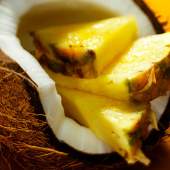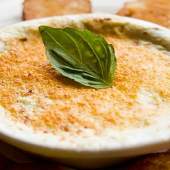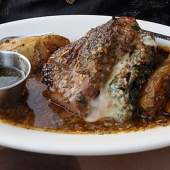Peanut Butter

“Man cannot live by bread alone; he must have peanut butter.”
– James A. Garfield, 20th President of the United States
“Nothing quite takes the taste out of peanut butter than unrequited love.”
– Charles M. Schulz (Peanuts)
“If you can’t control your peanut butter, you can’t expect to control your life.”
– Bill Watterson (Calvin and Hobbes)
January 24 was National Peanut Butter Day in the U.S. This American dietary mainstay is so popular it has more than one national holiday devoted to it (or its central ingredient) – if you consider yourself a “peanut butter lover,” your day is March 1; if it’s peanuts alone you crave, you’ll have to wait until September 13. How long has peanut butter been in existence, and when did it become an obligatory item on everyone’s pantry shelf?
When we think of peanut butter (or anything having to do with peanuts), we automatically tend to connect it to inventor and agricultural scientist George Washington Carver (1864-1943), who was among the first to see a myriad of possibilities in this ubiquitous legume (surprise: it’s not a nut, despite the presence of “nut” in its name). While Carver did come up with hundreds of other innovative uses for the peanut (many of them non-culinary and some of them less than successful) and was instrumental in popularizing it, peanut butter had already been around for a lot longer than that.
In fact, there is evidence that peanut “paste,” made from ground roasted peanuts, existed way back in the time of the ancient Aztecs and Incas – possibly as far back as 1500 BC – although it likely bore little resemblance to the more refined formulation that is so familiar to us today. It was definitely a niche food until the 1890s when Dr. John Harvey Kellogg (of breakfast cereal fame) devised a way to make it with raw peanuts, touting it as a healthy and (especially for people with a dental deficiency) easily consumable protein. Within a few years, as farming, harvesting, and manufacturing became automated, peanut butter began to be marketed to the masses and it caught on in a big way, especially after it hit concession stands at the 1904 St. Louis World’s Fair.
How did peanut butter meet his perfect match – jelly? For that, you will need to go back to the 1940s and World War II – peanut butter, jelly, and bread were separate items on the ration list for American GIs, and they may have been the geniuses who hit upon the idea of combining them to make a portable and palatable snack. (A marshmallow cream and peanut butter sandwich had been around since the previous world war, but didn’t become popular until an ad agency dubbed it the “Fluffernutter” in 1960.)
A few other fun peanut butter facts:
-
Peanut butter is chock full of nutrients: vitamins B6 and E, calcium, niacin, iron, and potassium; and it’s a great source of protein and monounsaturated (“good”) fat.
-
Approximately 550 peanuts are required to manufacture one twelve-ounce jar of peanut butter. Before grinding, the “hearts” are removed and used to make, of all things, birdseed.
-
Almost half of all the peanuts harvested in the U.S. are used to make peanut butter. And during Girl Scout Cookie season, about 230,000 pounds of peanut butter are needed weekly to bake their Tagalongs and Do-Si-Dos.
-
U.S. law dictates that peanut butter must be composed of at least 90% peanuts. If the composition is less than that, it must be labeled “peanut spread.”
-
Men tend to prefer chunky peanut butter; women usually choose the smooth variety. This is also true of the East Coast (creamy) versus the West Coast (chunky).
-
Elvis Presley and President Bill Clinton shared a favorite sandwich: peanut butter and bananas on white bread. Speaking of presidents, two of them were peanut farmers: Thomas Jefferson and Jimmy Carter. And presidential candidate Barry Goldwater once claimed that peanut butter made “a darn good shaving cream.”
-
Do you worry about peanut butter sticking to the roof of your mouth? You might suffer from arachibutyrophobia.
-
One early symptom of Alzheimer’s Disease: the inability to smell peanut butter.
- Peanut butter is not so popular with Europeans, who (on average) consume less than one tablespoon of it annually. The Dutch, however, were fine with using it in art – an exhibition consisting of 150 gallons of peanut butter dumped on a floor was sold for more than 100,000 euros.
That would buy an awful lot of…well…peanut butter!





